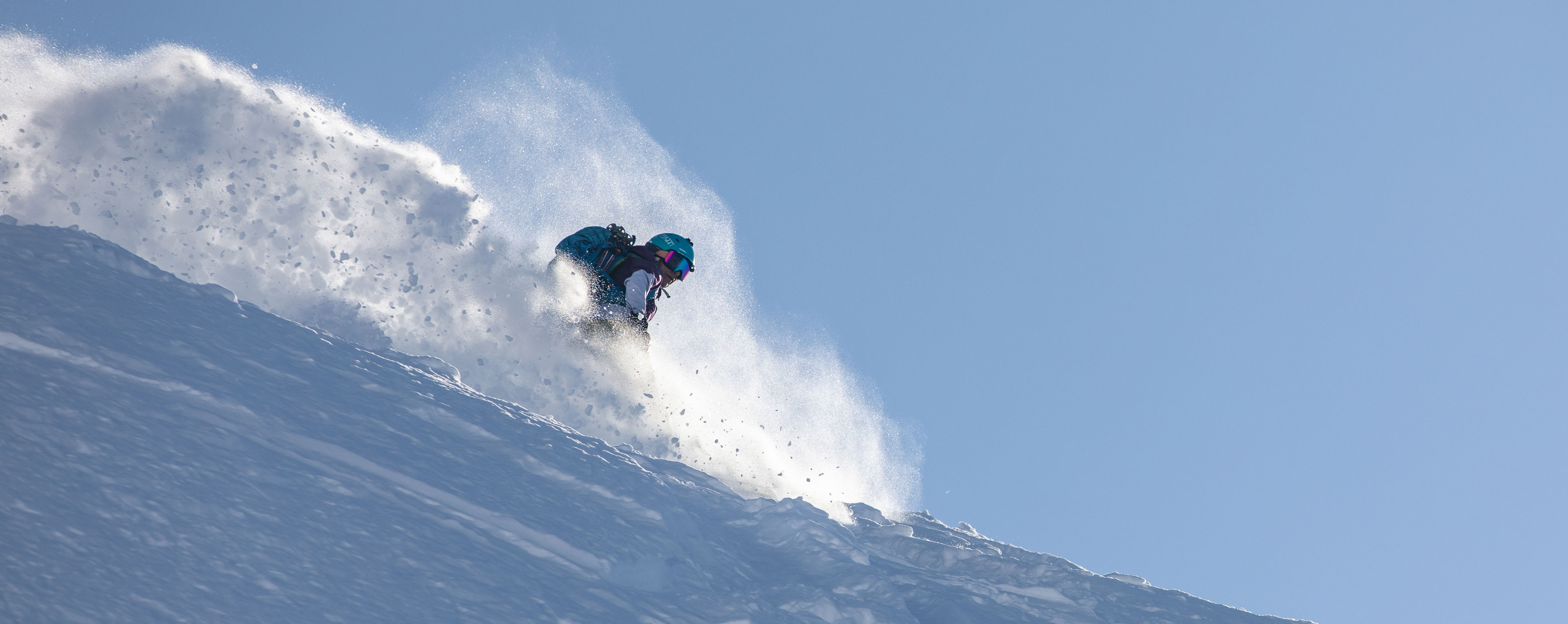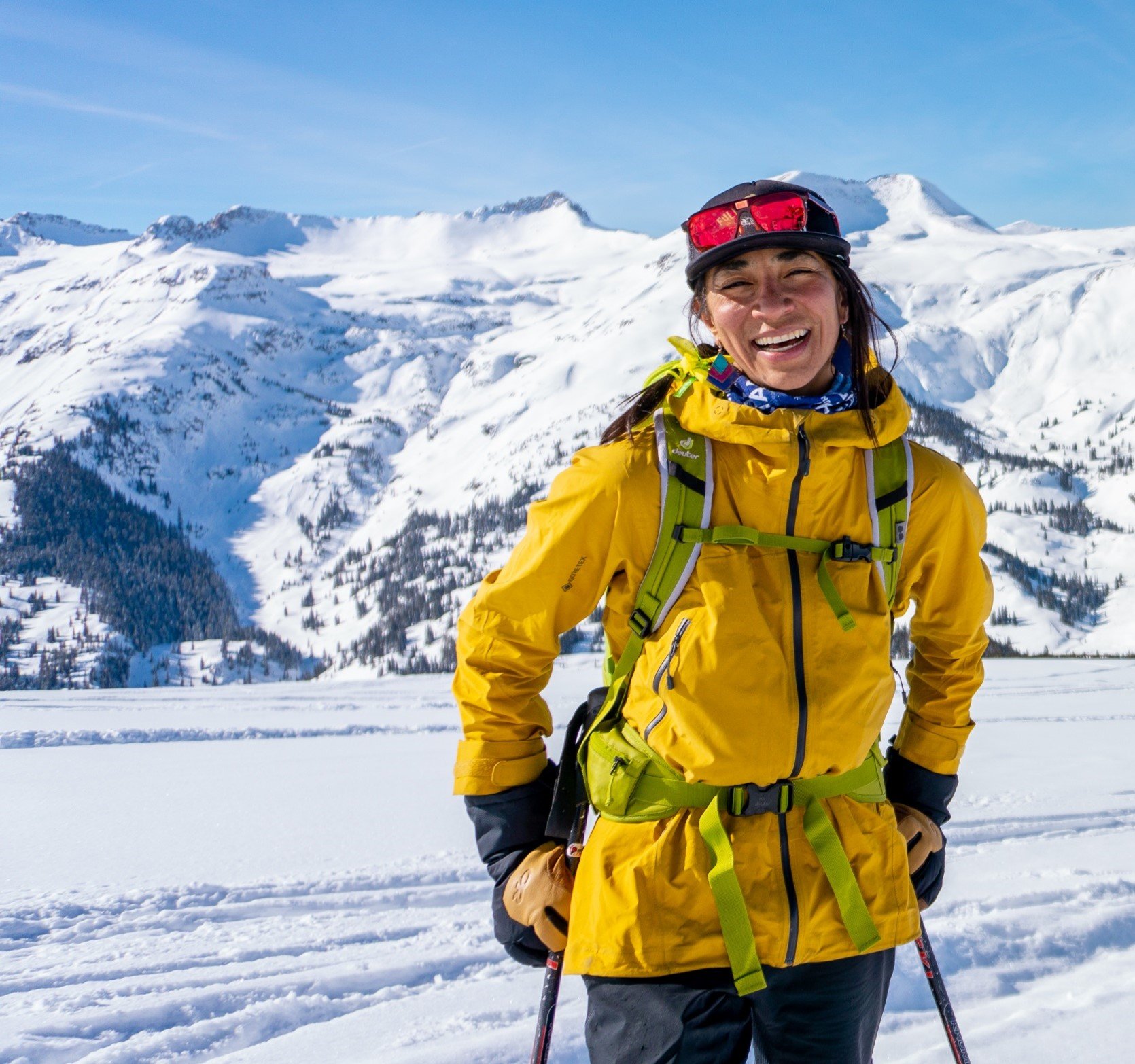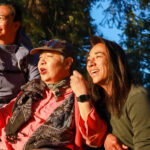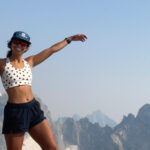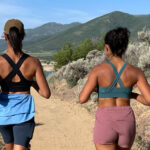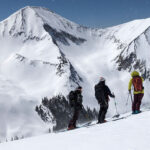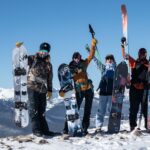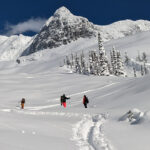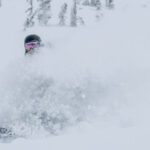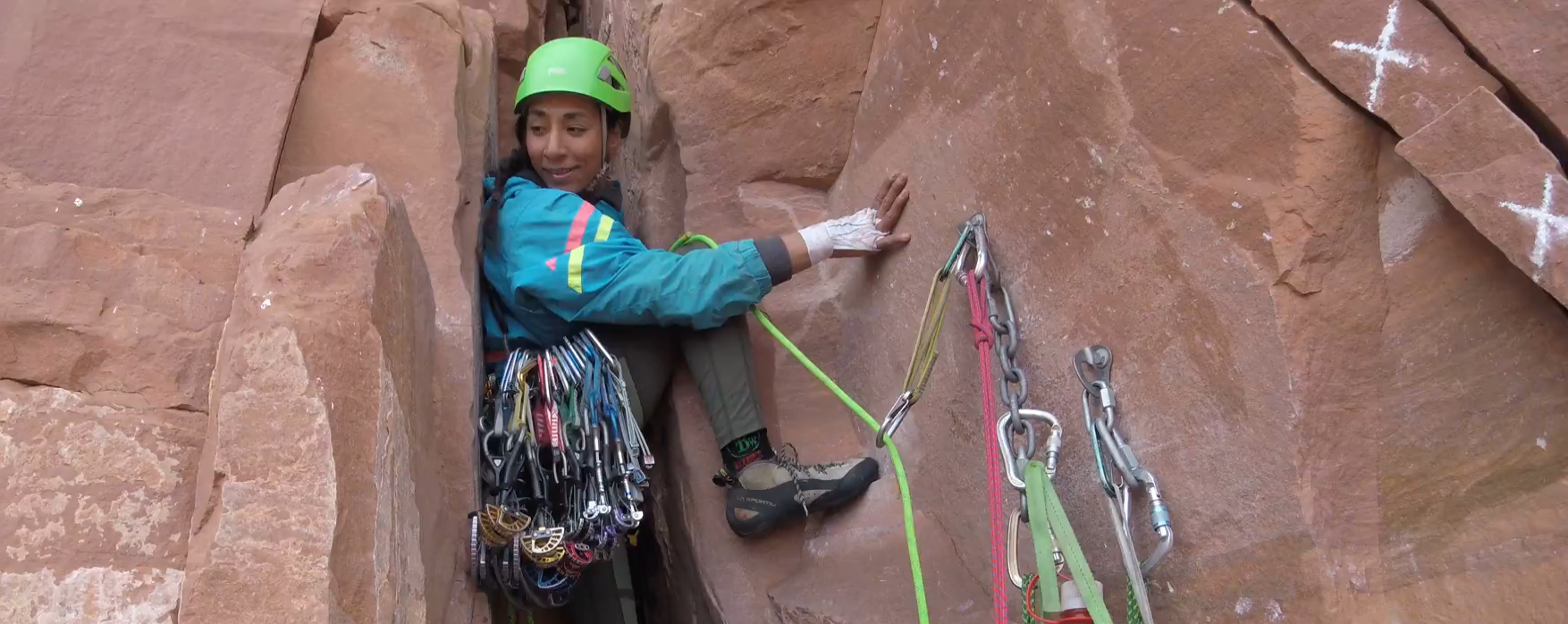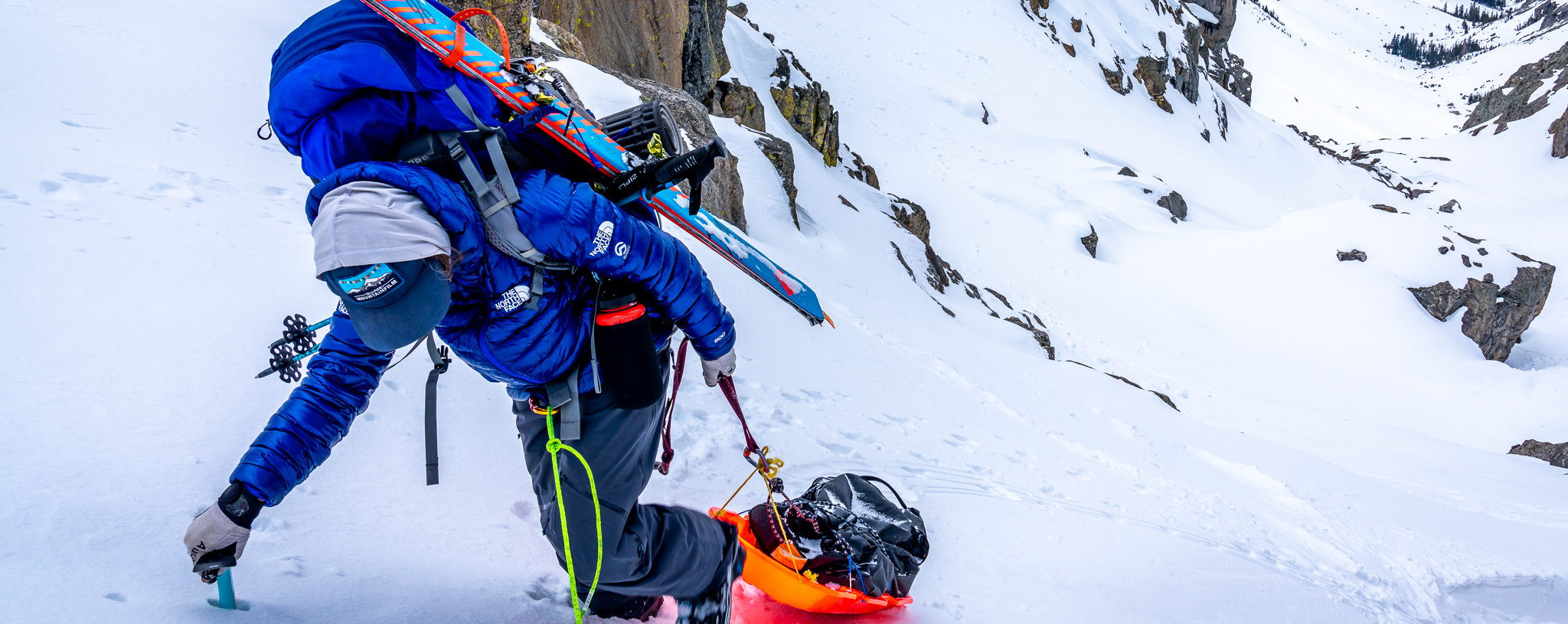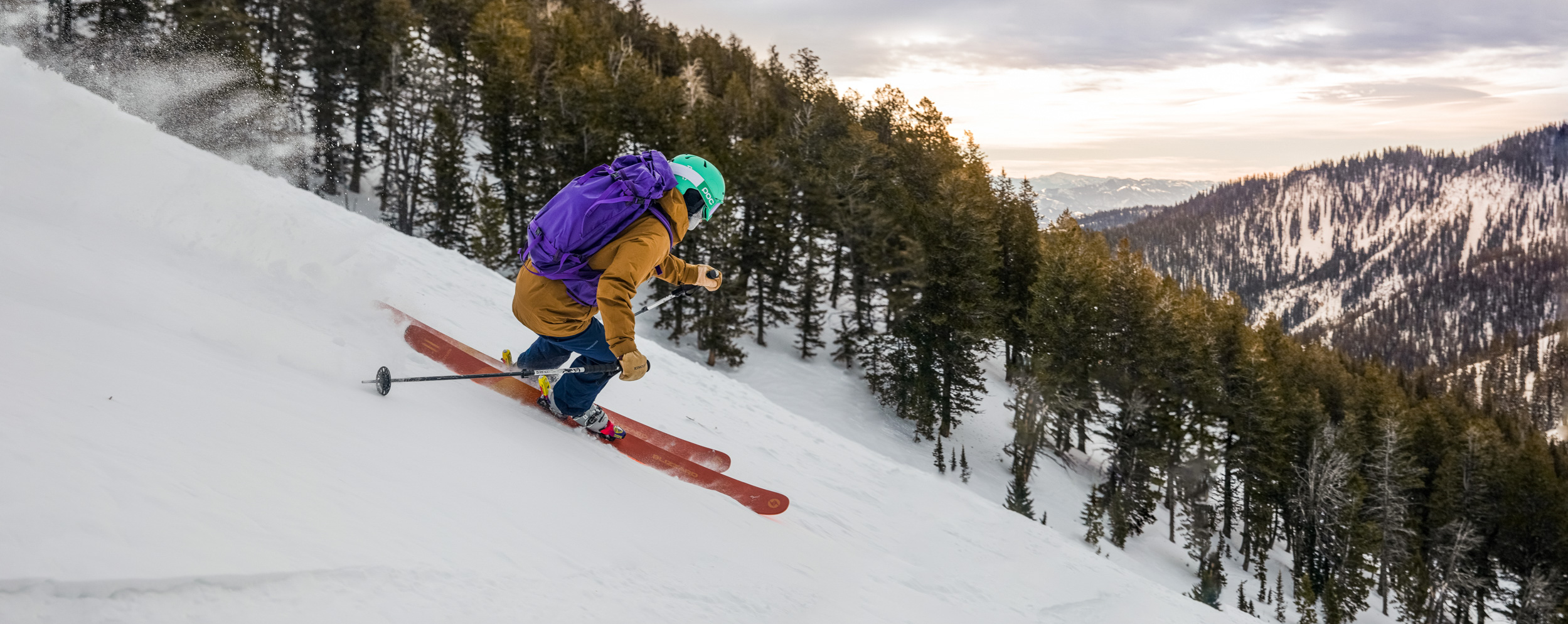Women in the Backcountry Part 3: Women’s Mentorship in the Mountains
A light breeze fluttered pole straps against the backs of my hands as I paused to gaze up towards the final pitch of the summit. I watched Sophia and Sofia blaze a trail up 25 Short’s East-facing breakable crust, and after a deep breath, I dug back in for my final push to the top.
Thus far, we’d made good decisions: our energy flowed with as much efficiency as our skis sliding resolutely uphill in unison. We knew Plans A, B, and C. Rope, harnesses, and ATCs snuggled in our packs at the ready. We’d dialed our systems, and all three of us ladies readied the skill-sets we brought to the table.
Cresting the wind-scoured summit, I watched as my friends discussed belay systems. The north face yawned several feet beyond them, and I felt a tingle inside: I’d finally, finally, get to employ the rock climbing skills I’d built the past few years. Giddy, I trotted to transition my splitboard from touring to riding mode: soon, it would be time to descend.
As I looked out to the crowns of bowed, jagged peaks that would soon surround me, I thought of the friend I’d lost the previous year—briefly—and my own tick list of objectives. It was strange to hold space for the tension of sadness and joy. That day in Grand Teton National Park, I started to understand what women’s mentorship in the mountains could be—and just how important it is to decision-making.
But that left me thinking: how do other women define mentorship, and how has it played into their personal journeys as recreational backcountry users and guides? If mentorship is the key to staying alive and having fun, how were others developing their support networks?
As we build agency for ourselves in the backcountry, we also help our partners realize their own best version of themselves—this is why women’s mentorship in the mountains is so very important. To lead and be led is to balance skill-sharing with learning, a critical part of embracing a growth journey in backcountry skiing, splitboarding, and mountaineering.
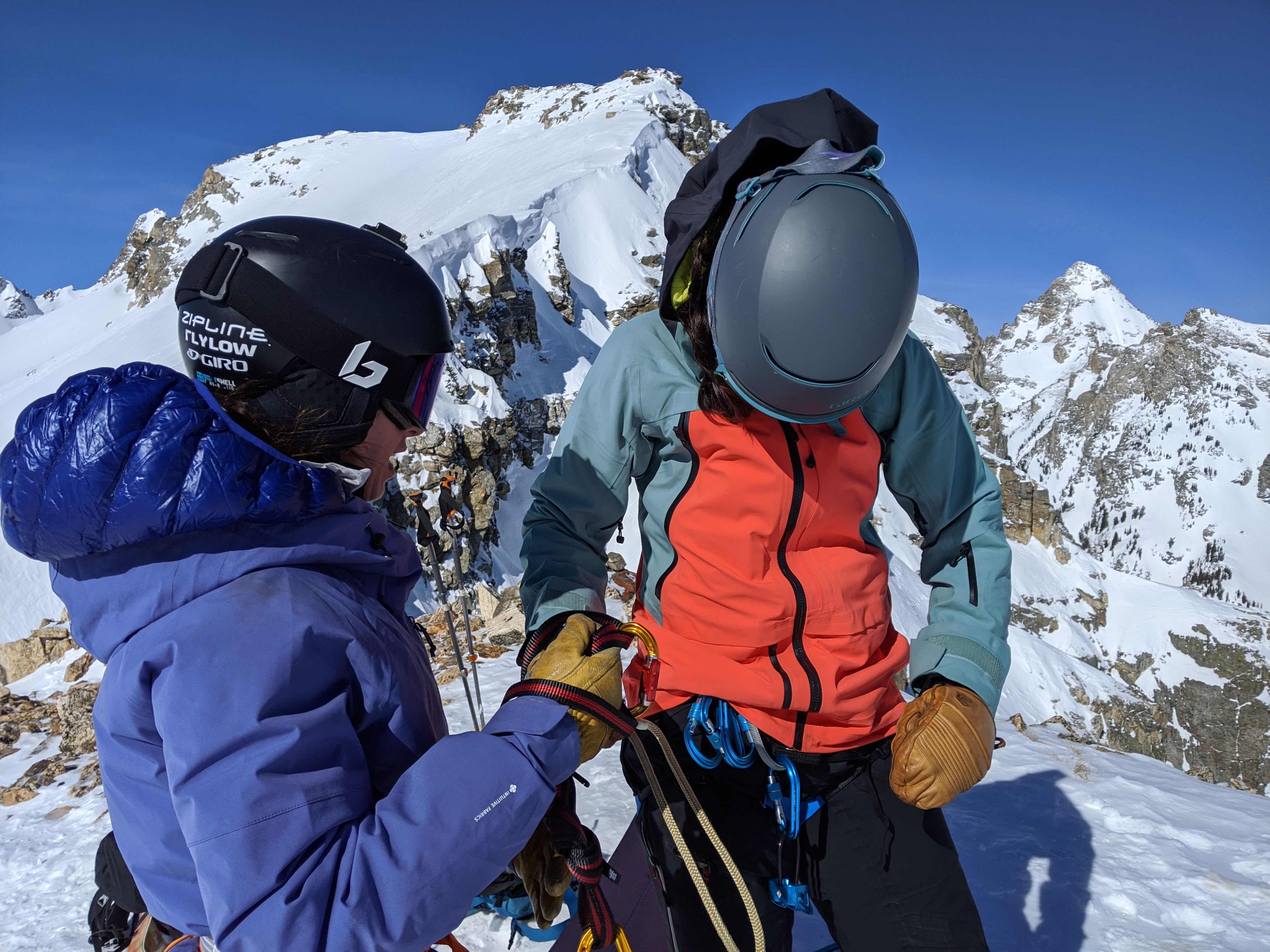
Understanding Mentorship in the Mountains
Mentoring cultivates positive behaviors and habits (like checking avalanche reports daily, cultivating environmental awareness, and reinforcing proper backcountry etiquette) while discouraging the development of bad behaviors and habits (i.e. ignoring shifting conditions, disregarding other partners’ opinions, and more).
Mentorship also helps us create a path of growth via technical (“hard”) skills as much as non-technical (“soft”) skills. While it often refers to exchanges wherein one person has significantly more experience than the other person, mentorship can also happen between peers (yet this reliance on peers—people that have similar or parallel levels of experience—can be dangerous).
So what exactly does mentorship in the mountains look like? Historically, it’s formally been found (mostly) in the guiding industry. As more people turn to the outdoors for fitness, fun, and personal growth, backcountry skiers and splitboarders must actively seek mentorship and mentor-like relationships. Before we can truly obtain competence, a gap develops between understanding, analysis, and intuition. Somewhere between formal education (classes and courses) and informal learning (experience and other knowledge acquisition), undeveloped intuition eludes us. If we only tour with our peers, we can form bad habits and dangerous behaviors. Mentorship fills this gap.
In the words of big mountain skier, community activist, and PT Tech Sophia Schwartz: “Mentorship is the bridge between classes and safely being able to accomplish objectives regardless of whether they’re intense mountaineering objectives or recreational tours.”
Schwartz continued: “My mentors are people whose journeys, lives, and accomplishments I admire. Their mentorship has helped me build a toolkit not only of tangible skills but also practices, beliefs, and paths to build my own journey.”
Mentorship can be a catalyst to our progress and maybe even a key to our joy in the mountains.
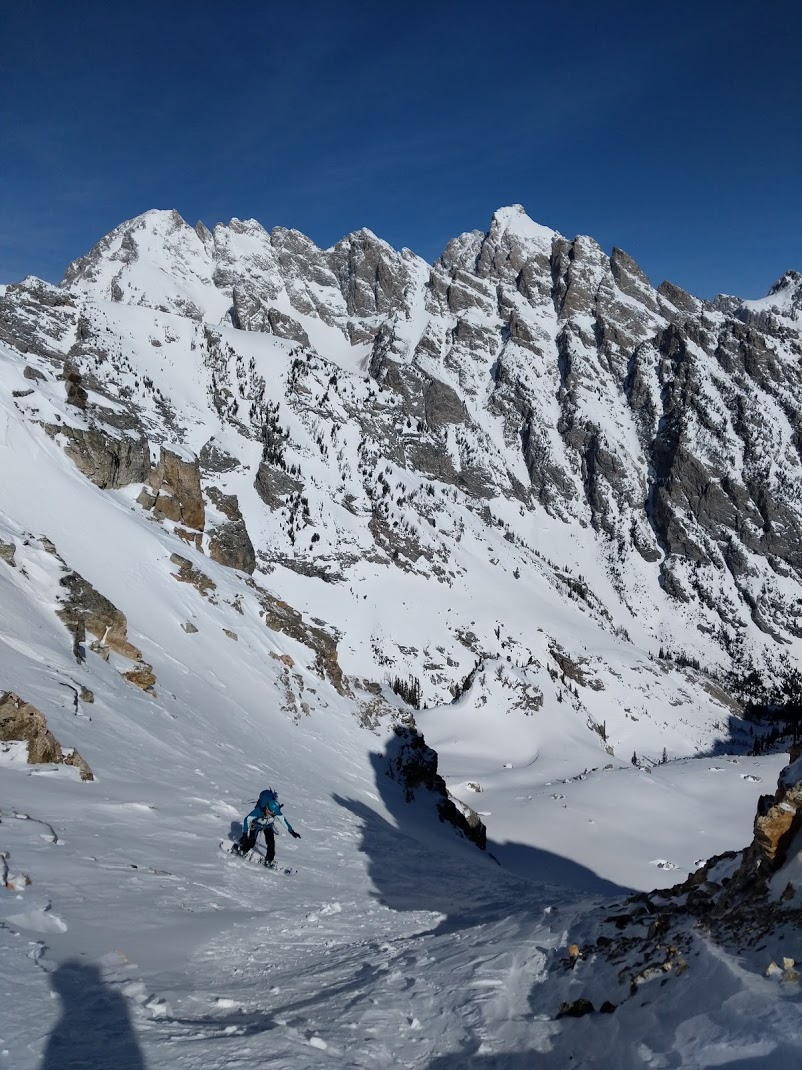
Mentorship Between Women in Backcountry Skiing
North American women paved the way for generations of their backcountry sisters to come, starting as early as the 1930s. Ladies of the American West carved out space in mountain towns as much as on snowy alpine faces. Look to names like Elizabeth “Betty” Woolsey, Virginia “Ginny” Huidekoper, Muggs Schultz, and Dolores LaChapelle for a primer on women in North American backcountry skiing.
Ladies like ski mountaineers Kit DeLaurentis and Hilaree Nelson, IFMGA guide Margaret Wheeler, and Jan Reynolds later helped set the stage for modern day crushers. These women set the stage for a new generation of women blending technical mountain skills with an eye towards inclusivity and storytelling (hint: many of them can be found via photos and quotes throughout this series).
For many of us, creating paths in the alpine doesn’t just help us find the best version of ourselves, it also becomes a way to create community, setting a template for every other partnership we create in our lives. But we all started somewhere: no matter where we are in our backcountry skiing journey, we all have something to learn.
“Paying it forward becomes, for many women in backcountry skiing, a way to honor those who have helped them get into the higher reaches of the world.”
From Part 1 of this series, “Why Do Women’s-Only Spaces Matter”
sdf
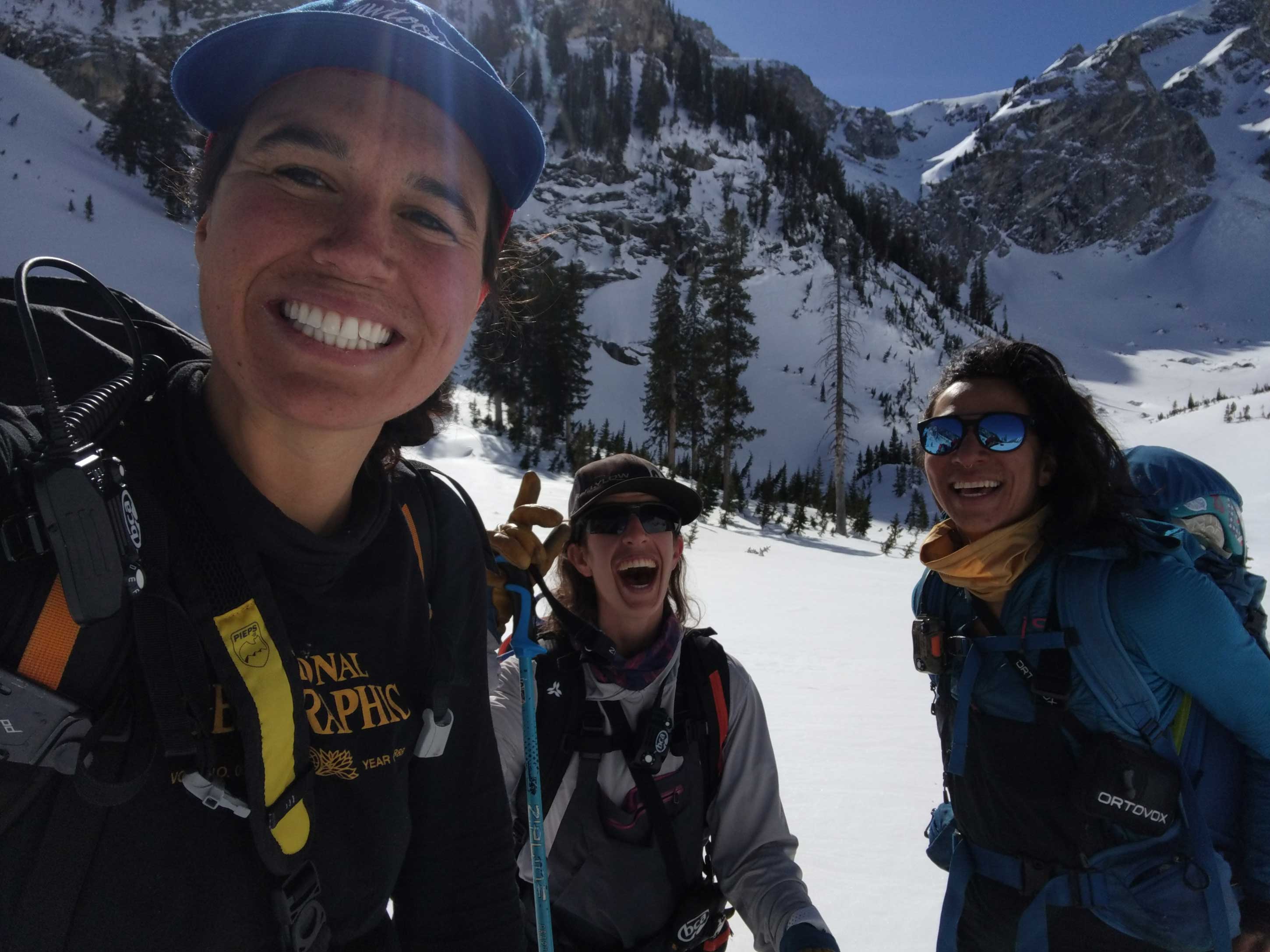
For experienced backcountry travelers, this often means two things: we must embrace the “Beginner’s Mindset” and cultivate an attitude of service.
Traditional power dynamics driven by hierarchy (and ahem, patriarchy) tell us that the appointed leader calls the shots, and determines where, how, and why we do something. At work, this looks like a boss who takes command without regard for shifting circumstances. In the backcountry, it looks similar: who here has heard of the expert halo? Or how we let “perceived experts” call the shots?
The “beginner’s mind” comes from shoshin (初心), a word from Zen Buddhism popularized by monk, teacher, and author Shunryu Suzuki. It “refers to a paradox: the more you know about a subject, the more likely you are to close your mind to further learning” (Psyche.co). Yet shoshin challenges us to drop our preconceived notions, entering into every experience with the idea that we can learn something new.
If we can do this, we can adopt a mindset of partnership and an attitude that encourages us to work in concert with our touring partners. It allows us to communicate and act from empathy, selflessness, and humility. And ultimately, if a trip leader (and everyone else along for the adventure) adopts this approach, it can create better collaboration, honesty, patience, and self-awareness—all good qualities to have in the mountains.
As ski mountaineer and activist Caroline Gleich says, “good mentorship is listening and supporting someone else’s leadership. It’s also an invitation to share trips, adventures and projects, [and so much more]….”
Put a Mentor On It
So where do beginner and intermediate backcountry women fit into the mentorship equation? I know: it’s easy to feel lost and confused when you’re either just getting started in the backcountry, or have just acquired enough skills and education to become truly dangerous.
If you are a woman who’s doubting her ability, questioning her judgment, or unsure of her competence, consider this is your challenge: create a support network and take charge of your growth.
Pro Tip: When touring, pay attention to how (and if) others lead. Do they solicit input, ask for others’ observations, and make decisions based on group consensus? There should always be one appointed trip leader, i.e. the person driving decision-making.
Otherwise, confusion and conflict can occur. This friction, sometimes called a leadership vacuum, indicates that someone must rise to the occasion to create consensus. The leadership vacuum can be a great opportunity for new leaders to emerge. In fact, touring with women’s-only groups (i.e. “slaydies days”) gives us all the opportunity to become budding leaders, since mixed gender groups often unconsciously defer to male-dominated leadership.
First: Learn to lead. Sarah MacGregor, AMGA Apprentice Splitboard and Rock Guide plus AIARE instructor, advised: “If you relax and let your more experienced friends take charge of route selection, route finding and decision-making (it’s really easy to fall into this!), then actively ask them to take a backseat and let you take the reigns. [Alternatively,] go out with friends who are less experienced than you so that you have the real life opportunity to lead.” (If you haven’t yet read Part 2 of this series, “Avalanche Education and Building Competence,” check it out to take charge of your learning journey!)
Second: Set goals for yourself each season. MacGregor advises: “set your goal and stick to it. A mentor of mine—Johann Aberger—says to wake up every morning and ask yourself, ‘what three things will I do today that will take me closer to my goal?’ Then, commit to making three moves toward your goal each day.” Whether your goal is to achieve general fitness, take your first hut trip, or summit a nearby peak, ask yourself: what are the small things that you can do to get yourself closer to this goal?
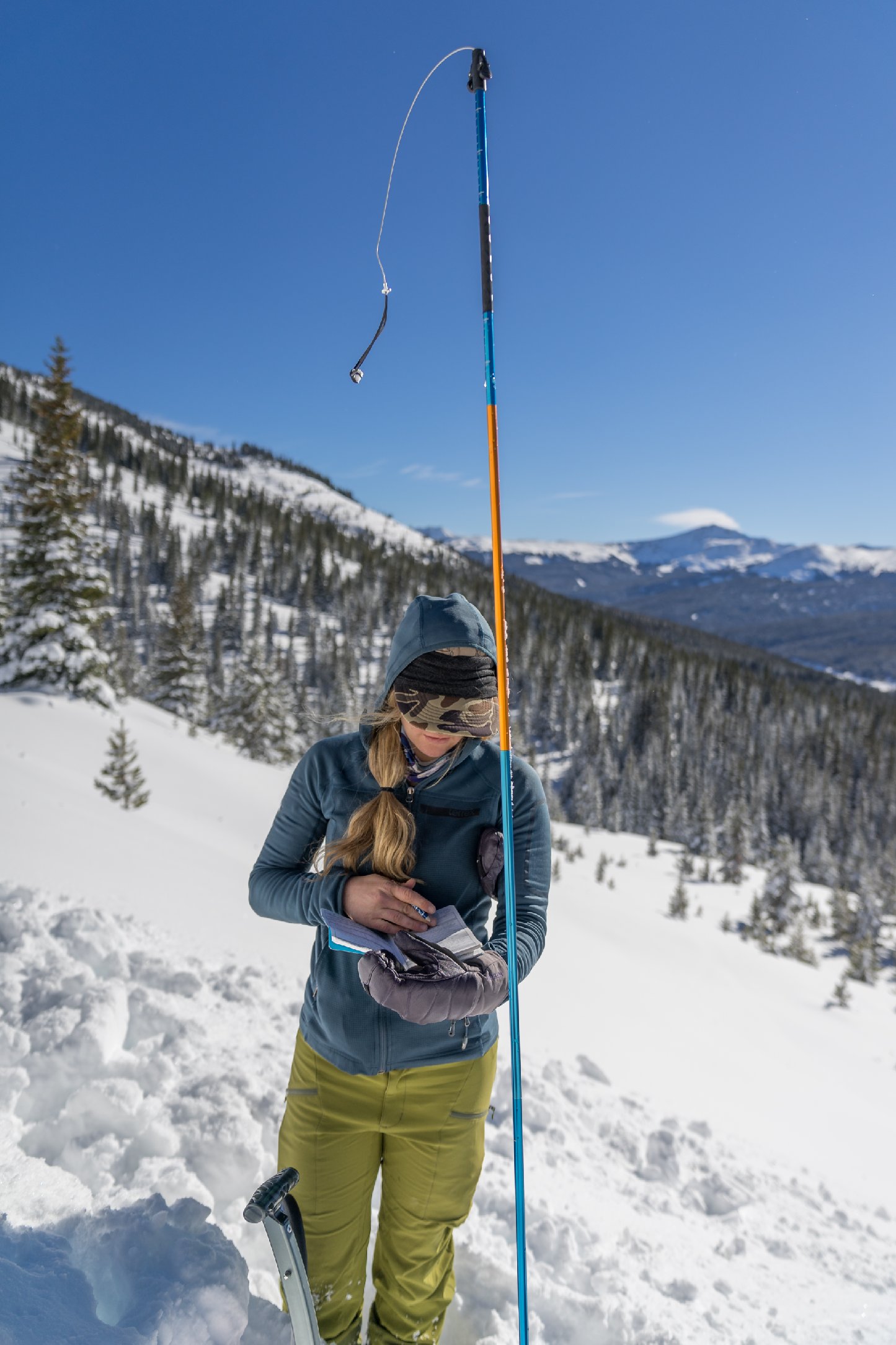
Third: Give others the space to lead. PR expert and splitboarder Alex Showerman advises: “aim to include the less experienced voices in the planning, assessment, and decision-making process.” When we pass the mic to friends who might have even less experience than us, we help others combat the imposter syndrome that most people secretly confront. It’s worth noting, too: imposter syndrome occurs at a higher rate for those whose gender, race, ability, orientation, or religion differs from others around us. This is why we need friends to metaphorically put the mic in our hands.
Showerman reminds us: “Most importantly, listen when friends speak, aiming to provide a safe space for them to feel confident in their voice in the backcountry, and even make decisions on their own. Just because I have more years of experience doesn’t mean my opinion is any more or less valid than theirs.”
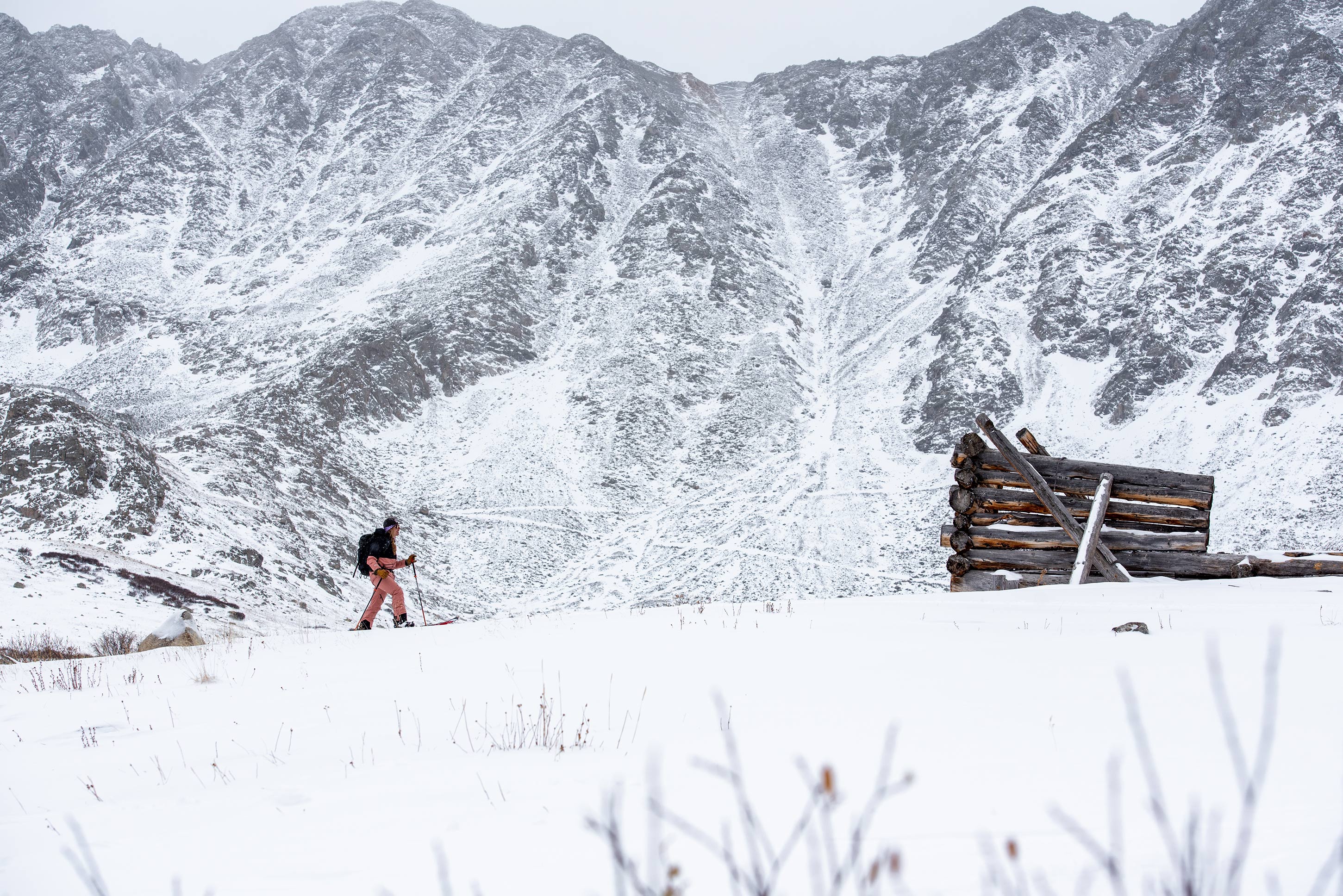
Fourth: Leverage your guides as mentors, asking questions as opportunities arise. Whether you’re interacting with a guide in your avalanche safety coursework or through a hired experience, remember to defer to their knowledge.
Many guides, as Sarah MacGregor shares, aren’t just in the game to educate others. Many guides also believe, deeply, in the power of community. MacGregor affirmed her love of: “creating camaraderie among women—whilst having the ability to connect with my whole heart to those who also want to build themselves up in this space. I believe in every single person I educate and care with all parts of myself that they are able to grow in whatever direction they choose.”
Fifth: Continue to pay it forward. Just as you support your touring partners, support your guides: please tip them if you feel comfortable doing so!
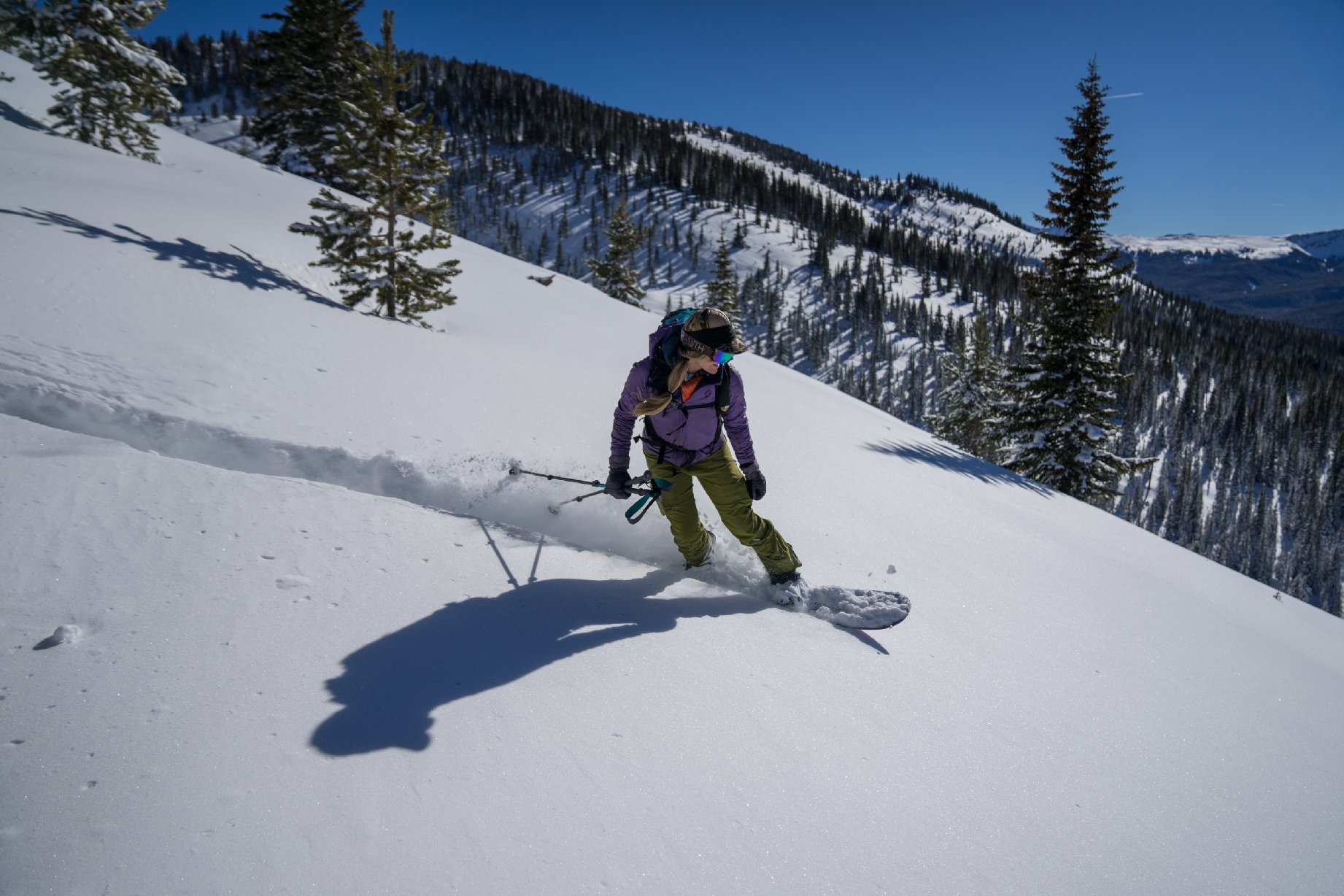
Descubrí que soy más capaz de lo que me hicieron creer. / I discovered I am more capable than they made me believe.
@NotLostJustDiscovering
Mentorship doesn’t just affirm our education or the experiences we have in affinity spaces—it also challenges us to grow. No matter who you are, or where you are in your journey as a backcountry skier, splitboarder, snowmobiler or mountaineer, please, just remember: there is power in your actions. You have potency in your words. You are a woman in the backcountry: your intuition and heart guides you in ways others can only dream. The only thing holding you back is yourself.
Remember: you are far more capable than you think.
Rise up, my sisters. Rise up.
Read the full series of Women in the Backcountry:
Women in the Backcountry, Part 1
Women in the Backcountry, Part 2
Women in the Backcountry, Part 4
About the Gear Tester
Athlete and storyteller Dani Reyes-Acosta aims to inspire individual action and collective communion through self-care and self-determination found in the outdoors. After leaving cushy corporate life to find her way back to her roots, she ticked rock climbs and ski lines across Argentina, Chile, Canada, and the USA on a circuitous path to self-actualization. Find her online as @NotLostJustDiscovering or via DaniReyesAcosta.com

